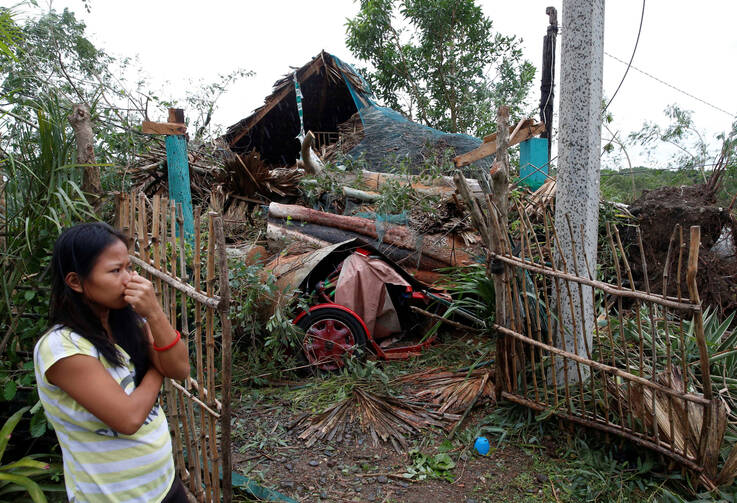Heavy damage was reported to homes and farmland in the northern Philippines on Oct. 20 after the strongest storm in three years struck overnight. Typhoon Haima barreled into northern Cagayan and Isabella provinces, ripping the roofs off homes and flattening crops. By late Oct. 21, 13 people had been reported dead, and Haima had hit southern China. Nearly every building in the city of Tuguegarao was damaged, according to officials quoted in the Philippine media. The city’s communication links were down and phone calls to the archdiocesan office in Tuguegarao did not go through. Across the district, many roads were flooded or blocked by fallen trees. Aid groups said the disruption made it difficult to assess the extent of damage; one aid official called it “a communications black hole.”
Typhoon Haima hammers Philippines
Show Comments (
)
Comments are automatically closed two weeks after an article's initial publication. See our comments policy for more.
The latest from america
Despair is easy for anyone who takes seriously the call to love your neighbor as yourself. But hope can come in two ways.
A Homily for the Sixteenth Sunday in Ordinary Time, by Father Terrance Klein
The majority of survey respondents cited their Marian devotions as having played an important role in the discernment and living of their call to religious life.
I have questioned the ethical implications of belonging to an institution with so many members sympathetic to MAGA politics. But I can still rediscover the hope of the Eucharist in my parish.








